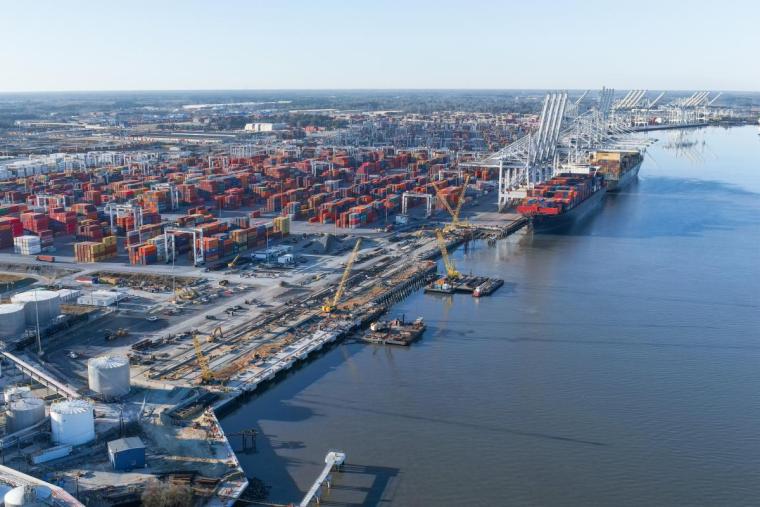
The Georgia Ports Authority handled a record 5.9 million twenty-foot equivalent container units in Calendar Year 2022, an increase of 5 percent over 2021.
“It was a challenging year, but collaborative effort across Georgia’s supply chain ensured cargo movement remained fluid,” said GPA Executive Director Griff Lynch. “I want to thank our Board for approving new infrastructure that allowed us to handle more cargo. Our gratitude also goes out to GPA employees and our partners at Gateway International, the International Longshoremen’s Association, trucking and rail. Their long hours and dedication were key to our success.”
The Port of Savannah achieved four of its top five months for container volume in CY2022, with trade volumes peaking in August at an all-time high of 575,500 TEUs.
“We’re excited about the possibilities ahead, with major infrastructure projects delivering greater capacity and efficiency for our customers,” said GPA Board Chairman Joel Wooten. “At Georgia Ports, we’re bringing to market faster vessel service, quicker turn times for trucks and more room to grow business.”
With the renovation of Berth 1 at Garden City Terminal to handle 16,000+ TEU vessels, the 90-acre Garden City Terminal West expansion and the transition of Ocean Terminal to an all-container facility, the Port of Savannah is set to increase annual capacity from 6 million to 7.5 million TEUs in 2023, and to 9 million by 2025. Learn more about GPA’s growth plans here.
In addition to record container cargo in 2022, GPA achieved a 16 percent increase in breakbulk tonnage to nearly 3.3 million tons last year, an improvement of 443,000 tons compared to 2021. In Roll-on/Roll-off cargo, Colonel’s Island Terminal in Brunswick handled 651,101 units of autos and heavy machinery. Ocean Terminal in Savannah moved another 19,630 Ro/Ro units, for a total of 670,731, an increase of 0.4 percent.
Total tonnage crossing all GPA docks reached 42.4 million tons last year, an increase of about 2 percent or nearly 760,000 tons.
Georgia’s deepwater ports and inland barge terminals support more than 561,000 jobs throughout the state annually, and contribute $33 billion in income, $140 billion in revenue and $3.8 billion in state and local taxes to Georgia’s economy.

There are no comments
Please login to post comments